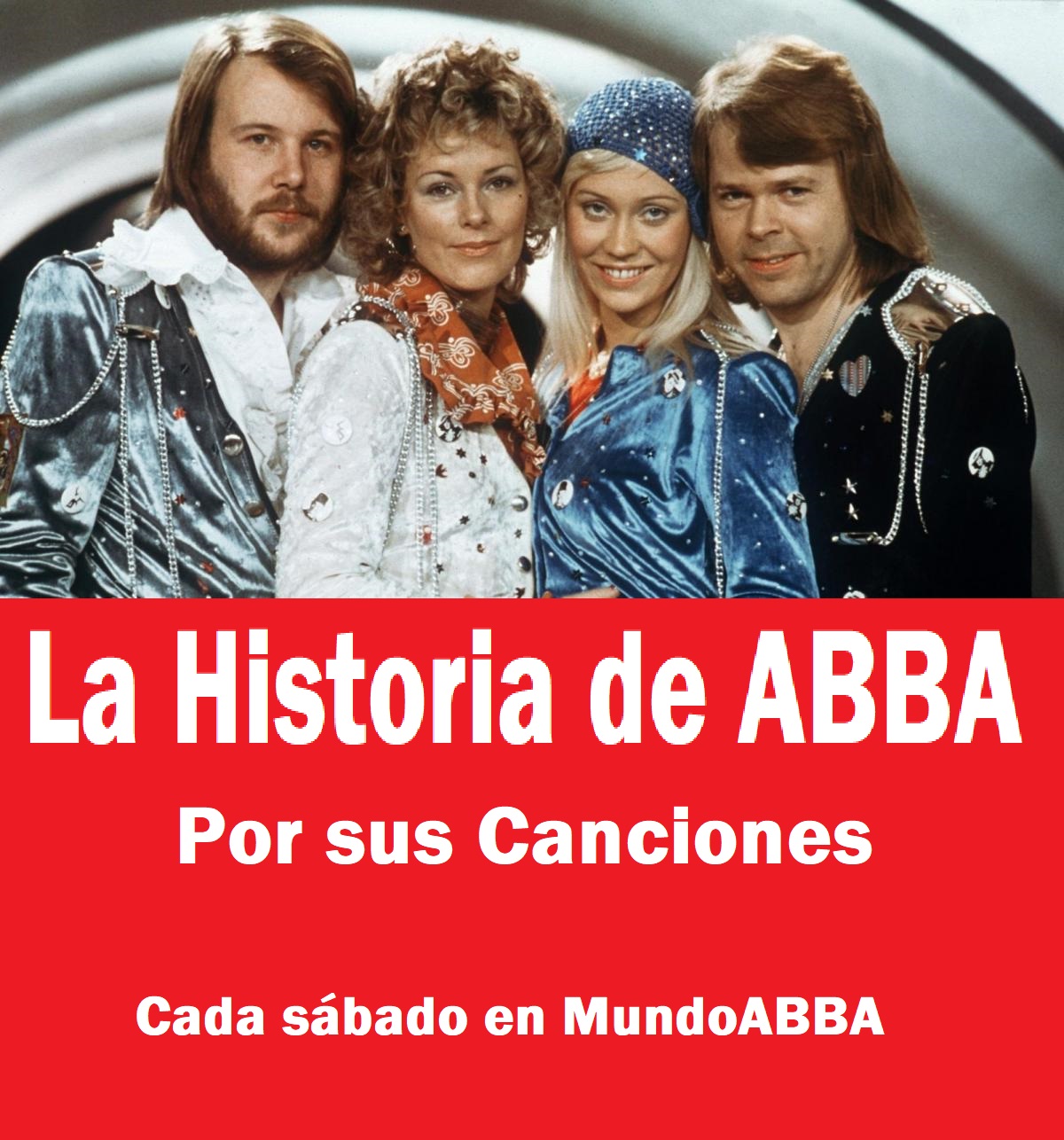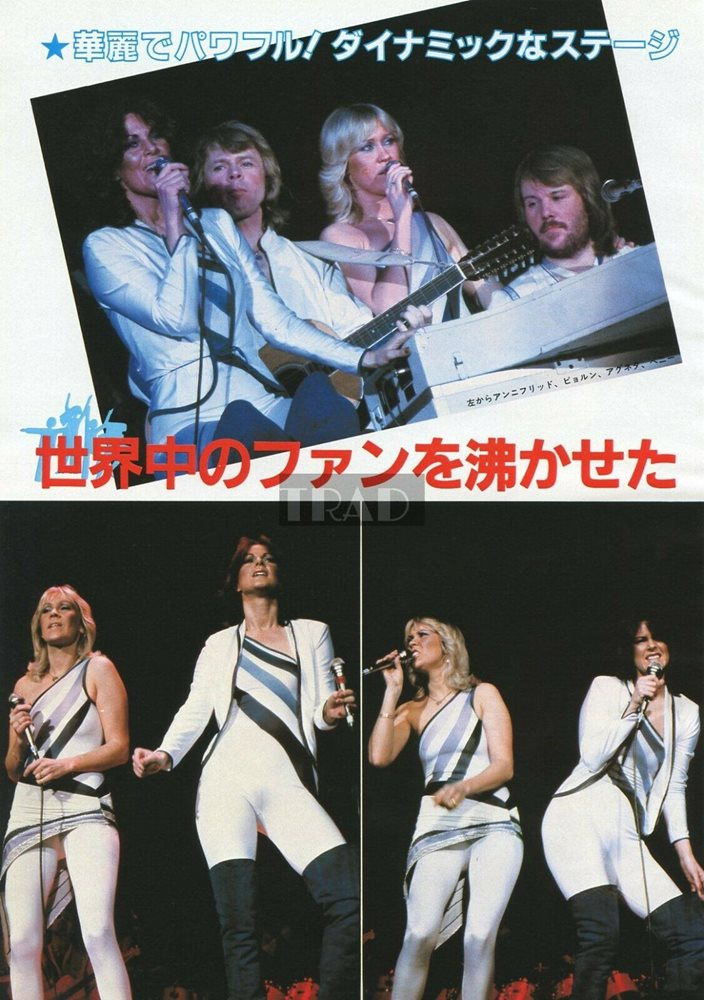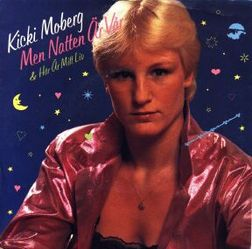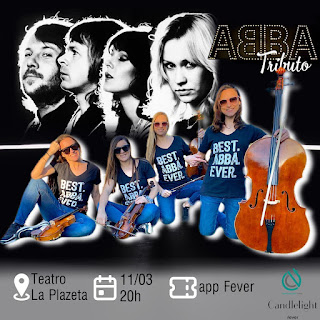The History of ABBA - Chapter 6
Chapter 6
https://www.youtube.com/watch?v=Nchf3n1S2TU&list=PLFsPu591tB7VAAkMlZ3LZt2tnccxW9Zj-&index=152
Listen the Podcast (in spanish)
1980
We move on to
1980, when the McCluskey couple, who, since the success of
"Chiquitita," had proposed translating more songs into Spanish for a
full album, had been proposed to by Agnetha and Frida. Agnetha and Frida
decided to accept the proposal and record those songs, taking advantage of the
fact that Björn and Benny had traveled to Barbados to seek inspiration. They
chose to sing six hits in Spanish, plus two more songs with Latin connotations.
These, along with the two existing ones, made the album "Gracias por la
música," with a total of 10 songs.
Ana Martínez, a
Spanish journalist, helped them with the pronunciation, and Michael Tretow used
the original lyrics to record the new vocals, but he made a mistake with
"La Reina del Baile," which is why the Spanish version includes the
verse that was omitted from the English version.
Some of Michael's new Spanish mixes are significantly different, reflecting his own personal preferences regarding the handling of drum sounds, or time gaps. On the song "Al Andar," despite Frida's rehearsals to imitate Björn's voice, the opening monologue was removed.
In March 1980,
ABBA traveled to Japan to complete the tour they had begun in 1979. The group
performed eleven sold-out shows, including six at the Budokan in Tokyo.
In July 1980, ABBA
released the single "The Winner Takes It All." The lack of a chorus,
the four notes repeating ad infinitum, and Agnetha's emotional performance make
the song a great ABBA classic.
In December, with
a slightly different backing track, Mireille Mathieu recorded "Bravo tu as
Gagné" in French at Polar Studios with Björn, Benny, and Frida, with
lyrics by Alain Boublil.
Super Trouper (el álbum)
November saw the
release of ABBA's seventh album, "Super Trouper," which reflected a
shift in ABBA's style, with more prominent use of synthesizers and increasingly
personal lyrics.
ABBA returned to a
more straightforward pop sound, unlike that recorded on their previous album,
"Voulez-Vous." The album closes with "The Way Old Friends
Do," which was recorded live a year earlier during their 1979 concert
tour.
The album's second
single, "Super Trouper," also reached number one in the UK, becoming
the group's ninth and final hit in the British charts.
"Super Trouper" is the directional follow
spot used to follow a performer on stage. The album's cover designer, Rune
Söderqvist, decided to use the central theme and photograph the group
surrounded by circus performers at London's Piccadilly Circus. But the city's
police refused to allow the center of their universe to be altered with
animals, and the photo was ultimately taken at Europa Film Studios in
Stockholm, with members of two local circuses. Several of ABBA's friends were
also invited to participate, including Görel, Tomas Ledin, and Anders Anderson
(Stig's son). At the same time, Lasse Hallström filmed scenes that would later
be used in the videos for "Happy New Year," "Happiness,"
and "Super Trouper".
"Happy New Year" has a peculiar history, as
it was written as a preamble to a musical that Björn and Benny presented to
John Cleese, whom they met by chance in Barbados. But when he declined the
invitation, it remained only a song.
In October, weeks before the album's release, Agnetha
and Frida recorded "Andante, Andante" and "Felicidad" in
Spanish, which would replace their English versions in Spanish-speaking
countries and be released as promotional songs in South America.
ABBA - Andante, Andante (en castellano)
Another track from the album, "Lay All Your Love
on Me," was released as a twelve-inch single, topping the US charts and
reaching number seven on the UK singles chart.
They also recorded the music videos "Conociéndome Conociéndote" and "Gracias por la Música" for the event, and mimed singing in Spanish to the music of "Dame! Dame! Dame!" during the interview, in recognition of the single's success in Spain at the time.
In November, they recorded the program "Words and Music" to promote their album "Super Trouper," where "The Way Olds Friends Do," recorded in London, can be heard for the first time.
ABBA made an appearance on Stars in France to perform their two hits "The Winner Takes It All" and "Super Trouper".
They then had to cancel their trip to Germany due to a
kidnapping threat against one of ABBA's relatives, forcing German television to
come to Sweden to record "Show Express" live from the SVT studios.
To thank SVT They recorded a second version of
"Happy New Year" especially for the occasion, in front of a piano and
with Agnetha and Frida wearing the same clothes as in the original video, while
Björn and Benny remained unchanged since Show Express.
As an anecdote, at the end of the year, Benny decided to produce another album for Finn Kalvik and invited him and his wife to his house for the entire recording period. One day, Finn said he needed backing vocalists, and Benny replied that he knew two exemplary singers. Thus, we can find the entire ABBA album on their album "Natt Og Dag".
Also, Mike Oldfield recorded a version of
"Arrival," which is found on his album "QE2." The artwork
for the single is a parody of the equivalent of ABBA's "Arrival"
album.
1981
The year 1981 began with Stig's fiftieth birthday,
which was secretly prepared, first with the recording of a single featuring
ABBA and Michael singing "Hovas Vittne," a humorous song about the
life of the founder of Polar Music. Unfortunately, only 200 copies were printed
and distributed among friends.


ABBA then recorded the song for a special television
program about Stig, and finally, on the 25th, the party began with breakfast in
Stig's room, with several of the Polar girls, including Agnetha and Frida,
dancing and singing the song "Ljuva Sextital." This was followed by a
huge party with 400 guests that ended in the evening, and then another party
for his closest friends only.
In February, at Melodifestivalen, we found Kicky
Mörberg performing "Men natten är vår," a song composed by Agnetha
with lyrics by Ingela Forseman. It wouldn't win, but the single was a good
success, also thanks to the B-side "Här Ár mitt liv," the Swedish
version of "I'm Still Alive".
In April, Dick Cavett was selected to try to do a fun
show with ABBA. ABBA also performed 10 songs live, although only 9 would make
the final version, including two new ones from the upcoming album.
Full Show Full Concert
That summer, Frida teamed up with Claes Af Geijerstam
to record a series of four shows, "Lite Grand i Örat," where the pair
would present and sing with other guests.
Frida & Clabbe - Let Get Rhis Show on the Road
In November, it was Agnetha's turn to release a
Christmas album with her daughter Linda.
Agnetha & Linda Ulvaeus - Nu tändas tusen juleljus
The Visitors (el álbum)
With The Visitors, ABBA moved away from the
"lighter" pop music they had recorded previously; the album is more
complex and mature. The opening track, "The Visitors," with its more
synthesizer-driven sound and Frida's distinctive lead vocals, heralds a change
in musical style.
With Benny and Frida going their separate ways, the
pain of separation was explored once again in "When All Is Said and Done".
The album's biggest single, "One of Us,"
also depicted the end of a love story.
"Soldiers" is a Cold War-themed song, highly
topical at the time, and we can still find more songs of isolation and regret
on the album.
Recording for the album, which began in March 1981,
was very difficult due to the tensions between the four members. In most
sessions, Agnetha and Frida recorded separately, so that all four of them
wouldn't be in the studio at the same time.
Technically, The Visitors is the first album recorded
entirely digitally, and for that reason, it was the first pop CD released
worldwide in 1982.
For the Hispanic market, "Se Me Está
Escapando" and "No Hay A Quien Culpar" were recorded, replacing
the original English versions on the album.
Rune Söderqvist designed the cover and, after seeing
the title "Like An Angel Passing Through My Room," photographed the
group in Julius Kronberg's studio, which contained the Eros painting. The group
stands apart and appears to be waiting solemnly in the shadows.
The album was finally released on November 30th,
followed a few days later by the single "One Of Us".
























Comentarios
Publicar un comentario